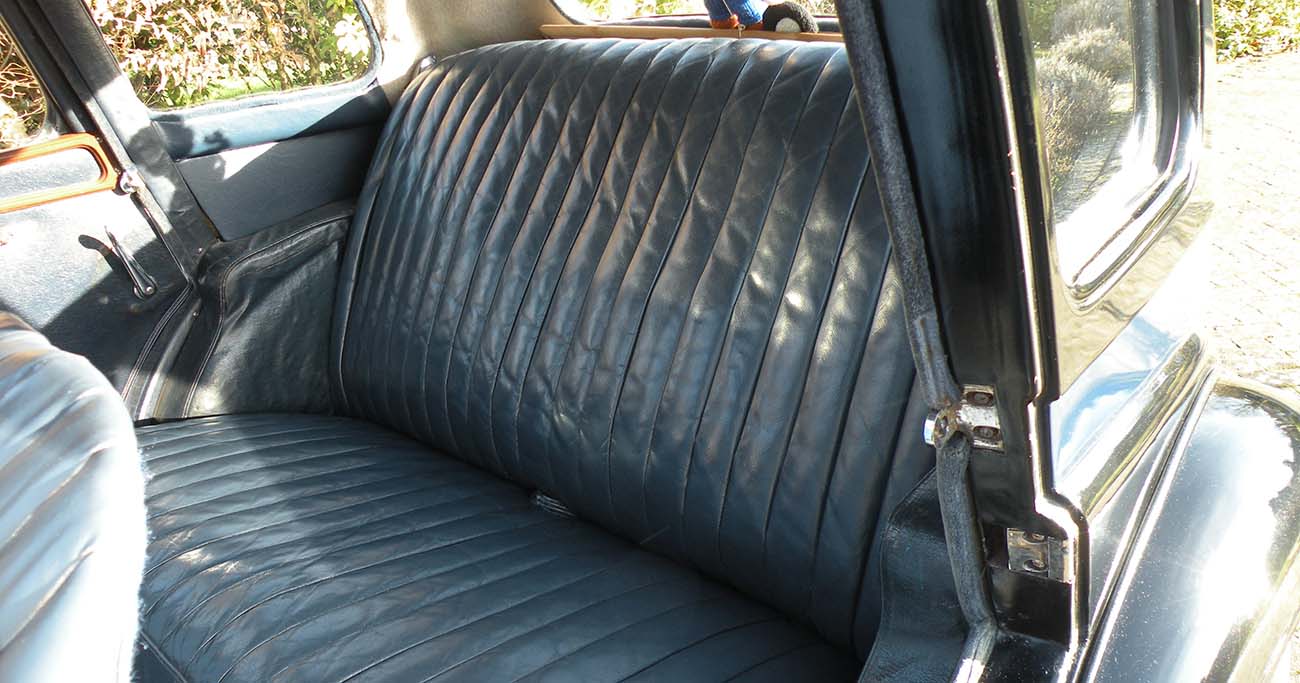
Leather Restoration at Home
One of the hallmarks of leather interiors is how well they stand up to time, in many cases just looking better and better with age. When properly cared for, a leather interior should endure decades upon decades of use.
Of course, after daily wear and tear or a few minor incidents, leather interiors can start looking worse for wear. When this happens, many people begin considering getting their seats or leather dashboards reupholstered or replacing them with brand new ones. Before resorting to such drastic measures for your cracked or dry leather, consider restoration.
With so many options for DIY leather restoration kits on the market, it can be a bit overwhelming. Here is a guide to help you choose the right kit, and get the best result.
Although time intensive, the restoration process is worthwhile and your car will thank you for the effort.
- It’s crucial to ensure that the colour of your restoration kit and your vehicle’s interior will match. Ideally, there will be a leather swatch placed under one of the seats to guide you in colour selection. You can also look up the manufacturer’s colour codes or colour names to help get the right match.
- Once you have the kit, it will help to disassemble the interior as much as possible. Removing the seats will not only let you work on them more comfortably, but also give you more room inside the car to work on any leather that isn’t removable (for example, the dash or steering wheel).
- The first step involves cleaning. Use a soft brush to loosen as much dirt as possible and a vacuum cleaner to suck it away. You will probably be surprised at how much debris has found its way into the seams and cracks.
- Use a soft cloth or sponge to apply the cleaner that came with your leather restoration kit. Follow the kit’s instructions to learn whether or not you should dilute with water and how aggressively you should scrub.
- Use a clean cloth to remove any left behind residue from the cleaner. You may want to wipe the leather with a mild solvent like isopropyl alcohol.
- After cleaning, you should wait until the leather is fully dry before beginning the restoration. Now it’s time to examine and assess the condition of the leather. If there are any large spots where the leather is paper thin, it might not be worth the effort to restore and you would be best patching these sections or opting for reupholstering. Same goes for substantial tears (which you should’ve noticed earlier in the process).
- Slight imperfections can be removed with a very light abrasive, such as 600-grit or higher sandpaper. If you use sandpaper to remove imperfections, you should proceed with another round of cleaning to get rid of the dust.
- Once everything is clean and smooth, you can begin with the dye. Start by testing a small application of the dye on a less noticeable area, such as under the seat. Trust us, it’s worth the extra step.
- If you are satisfied that the colours match, continue as per the manufacturer’s instructions. At our shop, we’ve found it easier to apply the dye with a sponge, rather than a brush. Give it a shot and let us know if you agree.
- For creases or cracks, we recommend using water to dilute a small amount of the dye by about 30% (add 15mL of water to 50mL of dye). Rub the diluted dye into the crack and wipe off with a fresh damp cloth. The dye should stay in the cracks/creases but come off the healthy leather surrounding them.
- Once you spot-fix all the cracks and creases, you can deal with areas that have significant fading. Follow the instructions for these areas, but you will most likely be applying undiluted product to the area and letting it dry. We recommend following up by going over the entire area with slightly diluted dye (about 20% diluted), and then wiping everything down with a clean cloth.
- Before applying the conditioner, make sure the leather is completely dry. It is best practice to leave it overnight in a well-ventilated (but indoor!) area. The next day when the leather is dry, apply the conditioner and marvel at the beautiful look and feel of your newly restored leather.
After reading this guide, you have probably learned that leather restoration is a labour of love (emphasis on the “labour” part). Although time intensive, the process is worthwhile and your car will thank you for the effort.
That being said, if you are a little short on time or don’t have the elbow grease to spare, that is exactly why detailing shops like CJ’s Autobling exist. Give us a call or send us a message and we can help you out with your next leather restoration project.
